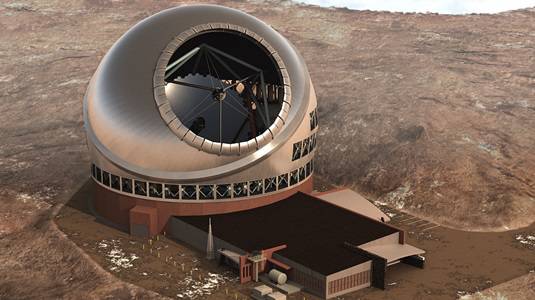This article is more than 1 year old
Protesters stop ground breaking on world's largest telescope
Hawaiian eyes aren't smiling
Peaceful protesters successfully halted the groundbreaking ceremony for construction of the world's largest telescope for a few hours before being removed by police.

The Thirty Meter Telescope (TMT) will be the largest Earth-based telescope ever built with, as the name implies, a 30-meter reflective surface built from 493 hexagonal mirrors. These will be computer controlled to counteract the blurring effects of the Earth's atmosphere and the 2,000 ton instrument, when it is completed in 2022, will cost $1.4bn.
To minimize light and atmospheric pollution the telescope is being built 14,000 feet up on the summit of the Mauna Kea volcano on Hawaii's big island, which is already home to 13 other telescopes. However, some of the locals have a problem with this latest construction.
A protest group calling itself Mauna Kea Anaina Hou claim the volcano is a sacred site and, as over 100 astronomers prepared to hold the opening ceremony of the site, staged a sitdown protest on the access road to the observatory.
"Things have to be done," said one protester. "This is desecrating a sacred area. Our land is under occupation."
The opening ceremony, which was due to have George Takei hosting, was briefly halted until the protesters were persuaded to move along. The ceremony, which was accompanied by a Hawaiian blessing from locals who don't mind the instrument being built, then proceeded without incident.
"With profound respect for the culture, environment, and values, and thanks to the people of Hawaii, we appreciate the opportunity to build this revolutionary facility for expanding our understanding of the universe," said TIO Board Chair Henry Yang.
"This is a remarkable partnership among institutions in five nations, in cooperation with the University of Hawaii, to achieve a shared, visionary goal."
The TMT will be able to see at least ten times further than any other earth-bound telescope, and up to 100 times as far for some observation targets. Its adaptive optics system will even be able to outperform the Hubble in terms of clarity of images.
